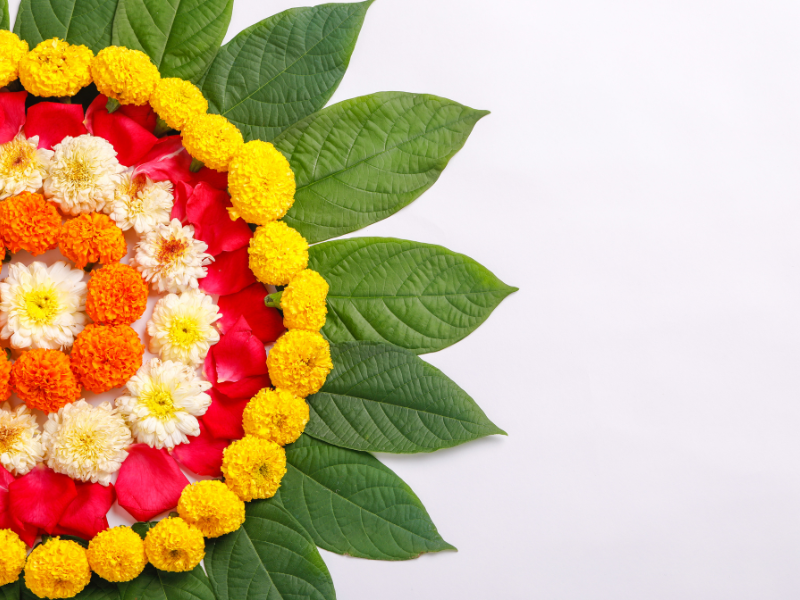
Floral design is an art form that combines creativity, technical expertise, and an understanding of botanical materials. In this comprehensive guide, we will explore the world of modern floral techniques and skills. Whether you’re an aspiring florist or a seasoned professional, this article aims to provide valuable insights, practical tips, and inspiration to elevate your floral arrangements to new heights.
The Artistry of Modern Floral Design
Understanding Color Theory:
Color plays a crucial role in floral design. Learn about the color wheel, color harmonies, and the psychological impact of different hues. Experiment with color combinations to create visually captivating arrangements that evoke specific moods and emotions.
Mastering Floral Arrangements:
Explore various floral arrangement styles, such as traditional, contemporary, and avant-garde. Understand the principles of balance, proportion, rhythm, and focal points to create harmonious and visually striking compositions.
Incorporating Textures and Shapes:
Add depth and interest to your floral designs by incorporating a variety of textures and shapes. Experiment with different foliage, blooms, branches, and unconventional elements to create unique and captivating arrangements.
Modern Floral Techniques
Floral Wiring and Taping:
Learn the art of floral wiring and taping to create versatile and structurally sound arrangements. Discover techniques for wiring individual flowers, creating flower clusters, and securing delicate stems.
Floral Foam Techniques:
Explore the use of floral foam as a versatile and practical medium for arranging flowers. Learn proper foam preparation, shaping, and securing techniques to create stable and long-lasting designs.
Advanced Techniques:
Water Manipulation: Discover techniques for dyeing water to create stunning color gradients and enhancing the visual impact of your arrangements.
Floral Dyeing and Tinting: Learn how to enhance the natural colors of flowers or transform them entirely using floral dyes and tints.
Floral Installations: Explore the world of large-scale floral installations, from suspended designs to immersive installations, and learn the techniques for creating breathtaking floral displays.
Innovative Floral Design Applications
Weddings and Events:
Explore how to create memorable floral arrangements for weddings and events. Learn about bridal bouquets, centerpieces, ceremony decor, and other key elements that contribute to a cohesive and stunning event design.
Everyday Floral Artistry:
Discover how to incorporate floral elements into everyday life, from creating eye-catching tablescapes to designing unique floral gifts and decor for various occasions.
Collaboration and Styling:
Explore the world of floral collaborations with photographers, stylists, and other creatives. Learn how to style and photograph your floral designs to showcase them effectively on social media and attract potential clients.
Continuing Education and Growth
Workshops and Masterclasses:
Attend floral workshops and masterclasses to learn from experienced professionals and industry experts. These hands-on learning opportunities will expand your knowledge, hone your skills, and keep you updated on the latest trends and techniques.
Industry Events and Competitions:
Participate in industry events, floral competitions, and design showcases to challenge yourself, gain recognition, and network with fellow florists. These experiences will fuel your creativity and help you establish yourself as a skilled floral artist.
Continuing Professional Development:
Stay updated with industry publications, blogs, and online resources dedicated to floral design. Explore reputable floral blogs, online courses, and specialized websites that offer valuable insights, tutorials, and inspiration.
Examples of Recommended Online Resources:
FlowerSchool: Offers online courses taught by renowned floral designers, covering various techniques and design styles.
Floret Flowers: A blog and online resource providing comprehensive information on flower farming, design techniques, and seasonal floral arrangements.
Institute of Floral Design: Offers online courses and resources for aspiring and professional florists, covering a wide range of floral design topics.
Flower Drying and Preservation Techniques
Flower Drying Methods:
Learn about different flower drying techniques, such as air drying, pressing, silica gel drying, and using a microwave. Each method has its advantages and is suitable for preserving different types of flowers.
Flower Preservation:
Discover preservation techniques that allow you to maintain the natural shape and color of flowers over an extended period. Explore methods like glycerin preservation, freeze-drying, and resin encapsulation to create long-lasting and beautiful floral displays.
Tips for Successful Floral Techniques and Skills Development
Practice Regularly:
Consistent practice is key to improving your floral techniques. Set aside dedicated time to experiment, learn new skills, and refine your existing ones.
Seek Inspiration:
Stay inspired by exploring floral design books, magazines, social media accounts, and attending flower shows. Draw inspiration from nature, art, fashion, and other creative disciplines.
Embrace Creativity:
Don’t be afraid to think outside the box and experiment with unconventional materials and design concepts. Allow your creativity to flourish and create unique floral arrangements that showcase your personal style.
Network and Collaborate:
Connect with other florists, join industry groups, and attend floral events to build relationships and learn from fellow professionals. Collaborating with other creatives can also provide unique opportunities to showcase your skills and expand your reach.
Conclusion
Floral techniques and skills are at the core of modern floristry, allowing artists to create breathtaking arrangements that evoke emotions and captivate viewers. By mastering the artistry of floral design, embracing innovative techniques, and continuing to learn and grow, aspiring and experienced florists can unlock their creative potential and thrive in the dynamic world of floral artistry. Remember, the key to success lies in practice, experimentation, and a passion for creating beauty with flowers.
Remember to always keep up with the latest trends, techniques, and resources available in the floral industry. Embrace continuous learning, stay inspired, and let your imagination bloom as you embark on your journey to becoming a skilled and successful floral artist.